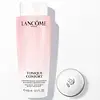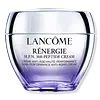What's inside
What's inside
 Key Ingredients
Key Ingredients

 Benefits
Benefits

 Concerns
Concerns

 Ingredients Side-by-side
Ingredients Side-by-side

Water
Skin ConditioningGlycerin
HumectantMalva Sylvestris Flower
Skin ConditioningRosa Centifolia Flower Water
Skin ConditioningSqualane
EmollientSodium Hyaluronate
HumectantSodium Hydroxide
BufferingHydroxyacetophenone
AntioxidantCaprylyl Glycol
EmollientCitric Acid
BufferingAcrylates/C10-30 Alkyl Acrylate Crosspolymer
Emulsion StabilisingPotassium Sorbate
PreservativeSodium Benzoate
MaskingChlorphenesin
AntimicrobialParfum
MaskingWater
Skin ConditioningGlycerin
HumectantDimethicone
EmollientCetearyl Alcohol
EmollientTheobroma Grandiflorum Seed Butter
Skin ConditioningAlcohol Denat.
AntimicrobialCetearyl Isononanoate
EmollientNiacinamide
SmoothingGlyceryl Stearate
EmollientPEG-100 Stearate
Isopropyl Palmitate
EmollientOctyldodecanol
EmollientCyclodextrin
AbsorbentHydrolyzed Lupine Protein
Skin ConditioningPisum Sativum Extract
Skin ConditioningAdenosine
Skin ConditioningCapryloyl Salicylic Acid
ExfoliatingHydrolyzed Hyaluronic Acid
HumectantHydrolyzed Linseed Extract
Skin ConditioningPentaerythrityl Tetra-Di-T-Butyl Hydroxyhydrocinnamate
AntioxidantTrisodium Ethylenediamine Disuccinate
Tocopheryl Acetate
AntioxidantCera Alba
EmollientOrbignya Oleifera Seed Oil
EmollientSimmondsia Chinensis Butter
Skin ConditioningCetearyl Glucoside
EmulsifyingCitric Acid
BufferingHydroxyethyl Acrylate/Sodium Acryloyldimethyl Taurate Copolymer
Emulsion StabilisingPolysorbate 60
EmulsifyingPotassium Cetyl Phosphate
EmulsifyingSorbitan Isostearate
EmulsifyingTocopherol
AntioxidantDimethicone/Polyglycerin-3 Crosspolymer
CleansingBenzyl Alcohol
PerfumingGeraniol
PerfumingLimonene
PerfumingChlorphenesin
AntimicrobialDipropylene Glycol
HumectantPhenoxyethanol
PreservativeSodium Benzoate
MaskingParfum
MaskingWater, Glycerin, Dimethicone, Cetearyl Alcohol, Theobroma Grandiflorum Seed Butter, Alcohol Denat., Cetearyl Isononanoate, Niacinamide, Glyceryl Stearate, PEG-100 Stearate, Isopropyl Palmitate, Octyldodecanol, Cyclodextrin, Hydrolyzed Lupine Protein, Pisum Sativum Extract, Adenosine, Capryloyl Salicylic Acid, Hydrolyzed Hyaluronic Acid, Hydrolyzed Linseed Extract, Pentaerythrityl Tetra-Di-T-Butyl Hydroxyhydrocinnamate, Trisodium Ethylenediamine Disuccinate, Tocopheryl Acetate, Cera Alba, Orbignya Oleifera Seed Oil, Simmondsia Chinensis Butter, Cetearyl Glucoside, Citric Acid, Hydroxyethyl Acrylate/Sodium Acryloyldimethyl Taurate Copolymer, Polysorbate 60, Potassium Cetyl Phosphate, Sorbitan Isostearate, Tocopherol, Dimethicone/Polyglycerin-3 Crosspolymer, Benzyl Alcohol, Geraniol, Limonene, Chlorphenesin, Dipropylene Glycol, Phenoxyethanol, Sodium Benzoate, Parfum
 Reviews
Reviews

Ingredients Explained
These ingredients are found in both products.
Ingredients higher up in an ingredient list are typically present in a larger amount.
Chlorphenesin is a synthetic preservative. It helps protect a product against bacteria in order to extend shelf life. In most cases, Chlorphenesin is paired with other preservatives such as phenoxyethanol and caprylyl glycol.
Chlorphenesin is a biocide. This means it is able to help fight the microorganisms on our skin. It is also able to fight odor-releasing bacteria.
Chlorphenesin is soluble in both water and glycerin.
Studies show Chlorphenesin is easily absorbed by our skin. You should speak with a skincare professional if you have concerns about using Chlorphenesin.
Learn more about ChlorphenesinCitric Acid is an alpha hydroxy acid (AHA) naturally found in citrus fruits like oranges, lemons, and limes.
Like other AHAs, citric acid can exfoliate skin by breaking down the bonds that hold dead skin cells together. This helps reveal smoother and brighter skin underneath.
However, this exfoliating effect only happens at high concentrations (20%) which can be hard to find in cosmetic products.
Due to this, citric acid is usually included in small amounts as a pH adjuster. This helps keep products slightly more acidic and compatible with skin's natural pH.
In skincare formulas, citric acid can:
While it can provide some skin benefits, research shows lactic acid and glycolic acid are generally more effective and less irritating exfoliants.
Most citric acid used in skincare today is made by fermenting sugars (usually from molasses). This synthetic version is identical to the natural citrus form but easier to stabilize and use in formulations.
Read more about some other popular AHA's here:
Learn more about Citric AcidGlycerin is already naturally found in your skin. It helps moisturize and protect your skin.
A study from 2016 found glycerin to be more effective as a humectant than AHAs and hyaluronic acid.
As a humectant, it helps the skin stay hydrated by pulling moisture to your skin. The low molecular weight of glycerin allows it to pull moisture into the deeper layers of your skin.
Hydrated skin improves your skin barrier; Your skin barrier helps protect against irritants and bacteria.
Glycerin has also been found to have antimicrobial and antiviral properties. Due to these properties, glycerin is often used in wound and burn treatments.
In cosmetics, glycerin is usually derived from plants such as soybean or palm. However, it can also be sourced from animals, such as tallow or animal fat.
This ingredient is organic, colorless, odorless, and non-toxic.
Glycerin is the name for this ingredient in American English. British English uses Glycerol/Glycerine.
Learn more about GlycerinParfum is a catch-all term for an ingredient or more that is used to give a scent to products.
Also called "fragrance", this ingredient can be a blend of hundreds of chemicals or plant oils. This means every product with "fragrance" or "parfum" in the ingredients list is a different mixture.
For instance, Habanolide is a proprietary trade name for a specific aroma chemical. When used as a fragrance ingredient in cosmetics, most aroma chemicals fall under the broad labeling category of “FRAGRANCE” or “PARFUM” according to EU and US regulations.
The term 'parfum' or 'fragrance' is not regulated in many countries. In many cases, it is up to the brand to define this term.
For instance, many brands choose to label themselves as "fragrance-free" because they are not using synthetic fragrances. However, their products may still contain ingredients such as essential oils that are considered a fragrance by INCI standards.
One example is Calendula flower extract. Calendula is an essential oil that still imparts a scent or 'fragrance'.
Depending on the blend, the ingredients in the mixture can cause allergies and sensitivities on the skin. Some ingredients that are known EU allergens include linalool and citronellol.
Parfum can also be used to mask or cover an unpleasant scent.
The bottom line is: not all fragrances/parfum/ingredients are created equally. If you are worried about fragrances, we recommend taking a closer look at an ingredient. And of course, we always recommend speaking with a professional.
Learn more about ParfumSodium Benzoate is a preservative. It's used in both cosmetic and food products to inhibit the growth of mold and bacteria. It is typically produced synthetically.
Both the US FDA and EU Health Committee have approved the use of sodium benzoate. In the US, levels of 0.1% (of the total product) are allowed.
Sodium benzoate works as a preservative by inhibiting the growth of bacteria inside of cells. It prevents the cell from fermenting a type of sugar using an enzyme called phosphofructokinase.
It is the salt of benzoic acid. Foods containing sodium benzoate include soda, salad dressings, condiments, fruit juices, wines, and snack foods.
Studies for using ascorbic acid and sodium benzoate in cosmetics are lacking, especially in skincare routines with multiple steps.
We always recommend speaking with a professional, such as a dermatologist, if you have any concerns.
Learn more about Sodium BenzoateWater. It's the most common cosmetic ingredient of all. You'll usually see it at the top of ingredient lists, meaning that it makes up the largest part of the product.
So why is it so popular? Water most often acts as a solvent - this means that it helps dissolve other ingredients into the formulation.
You'll also recognize water as that liquid we all need to stay alive. If you see this, drink a glass of water. Stay hydrated!
Learn more about Water